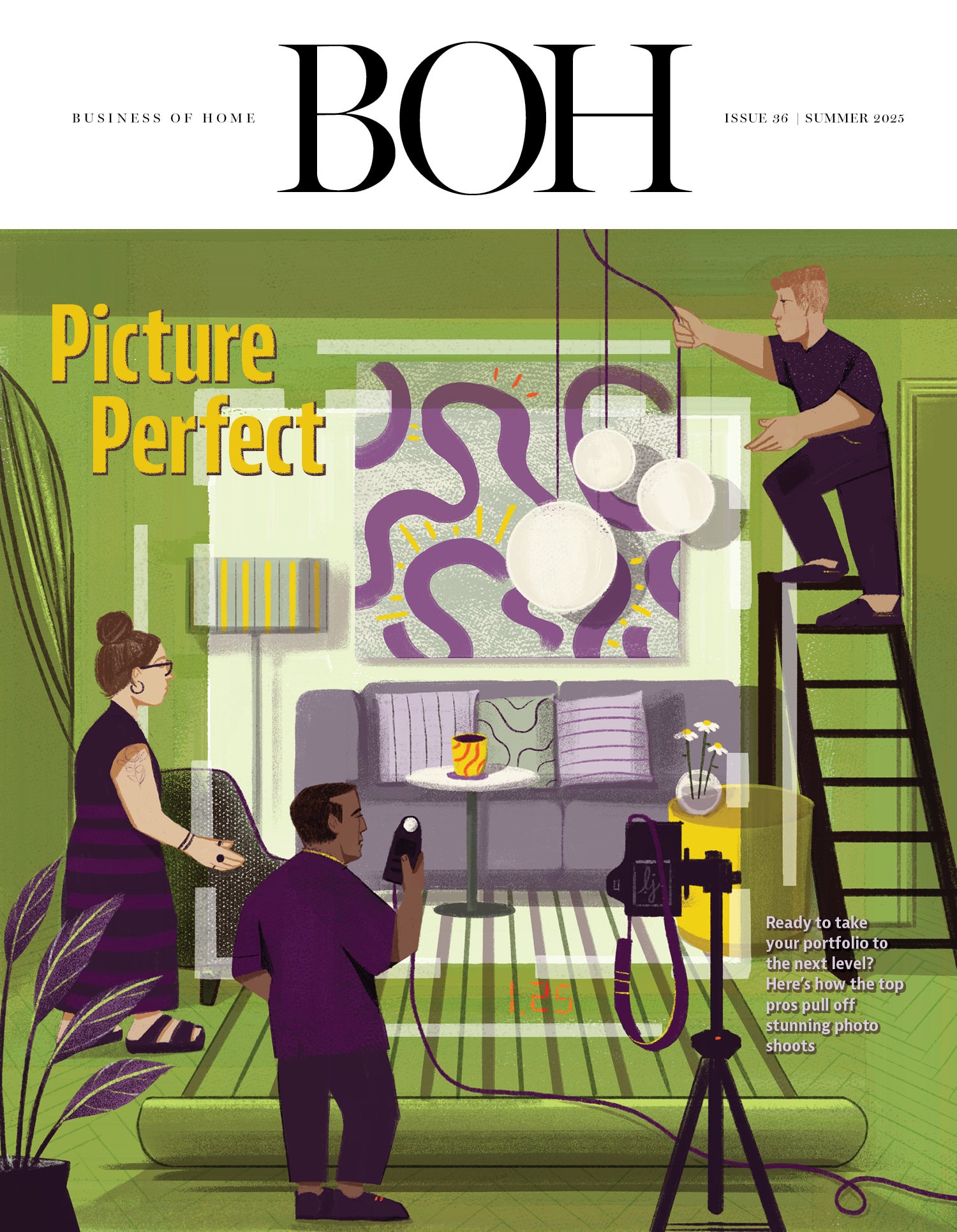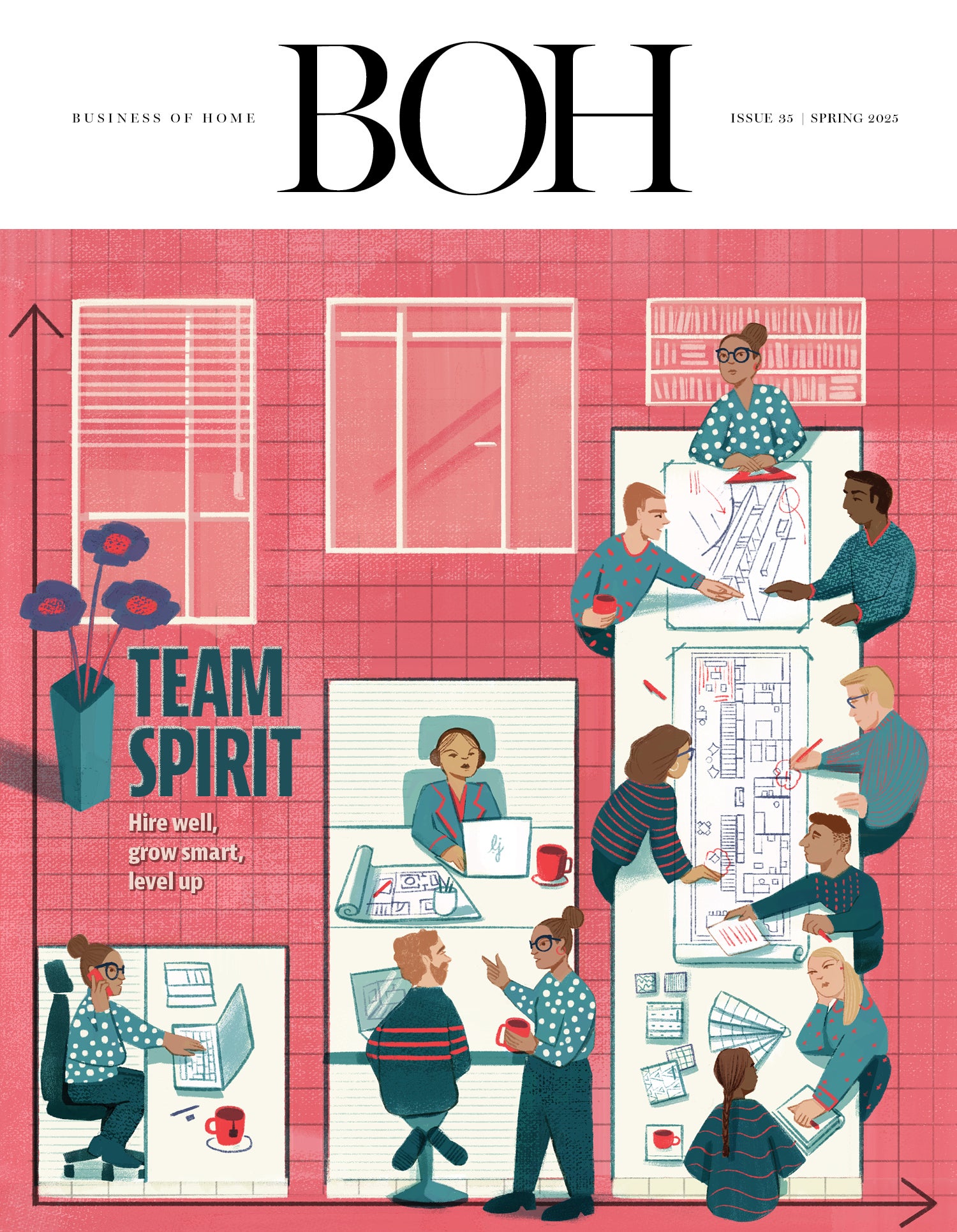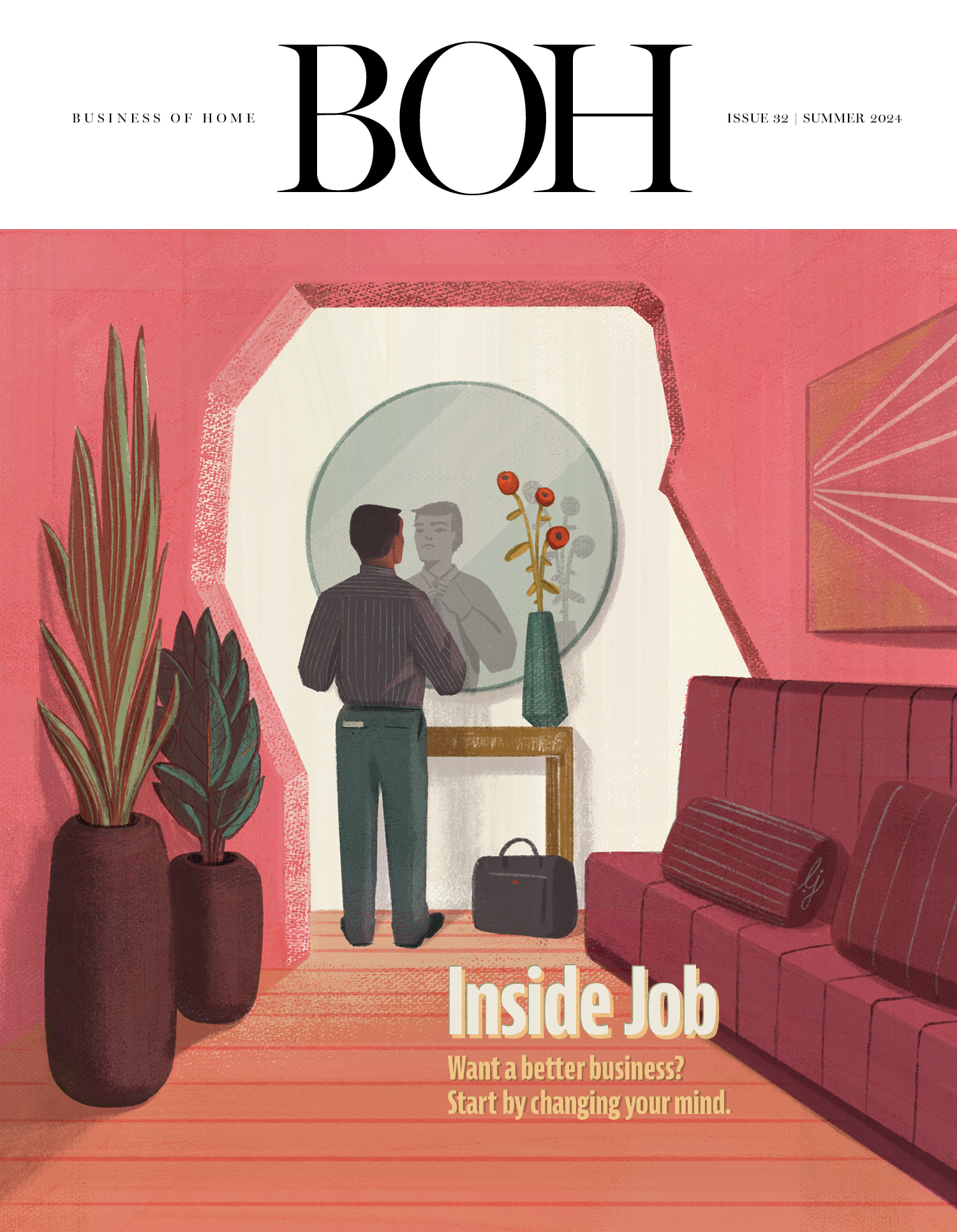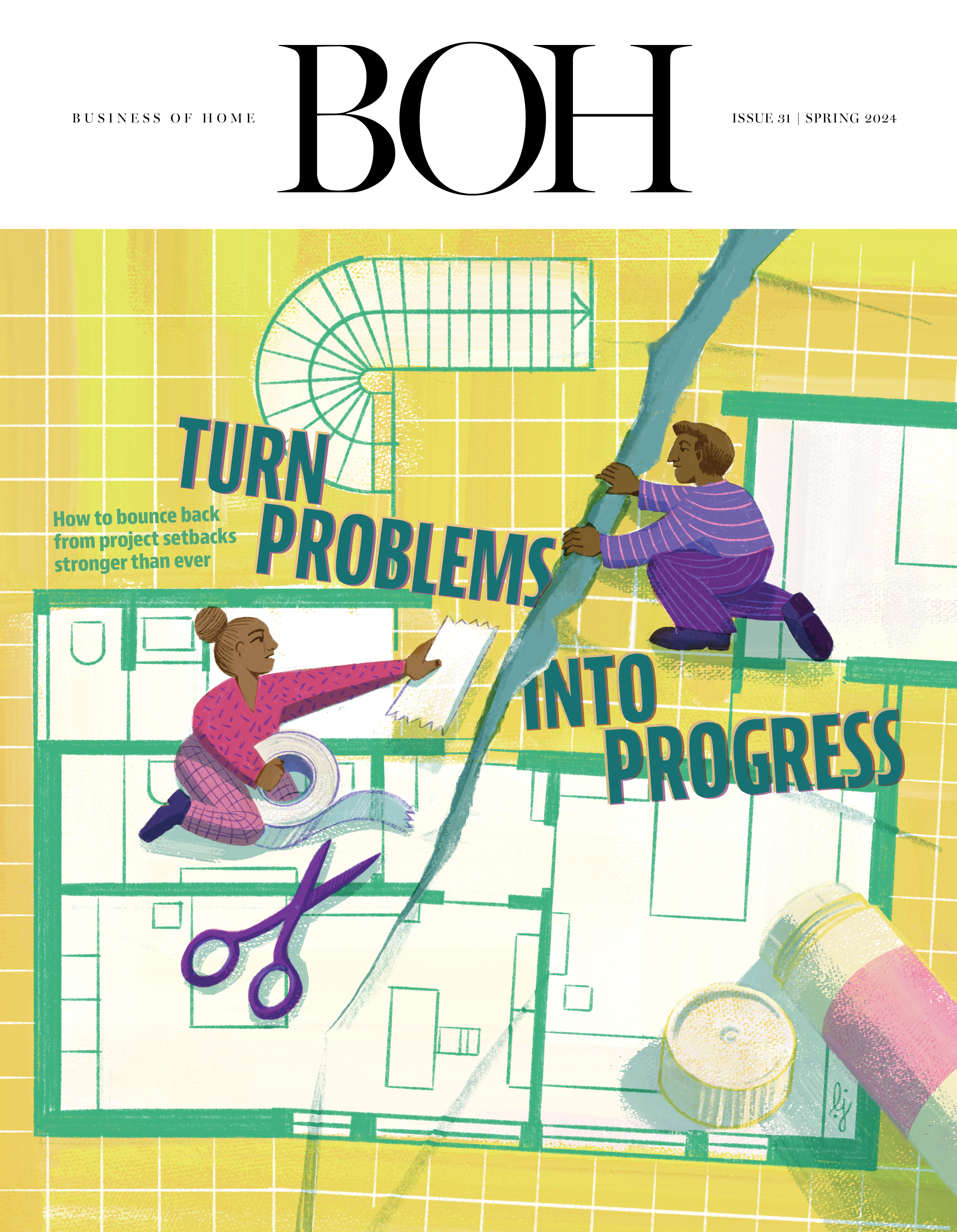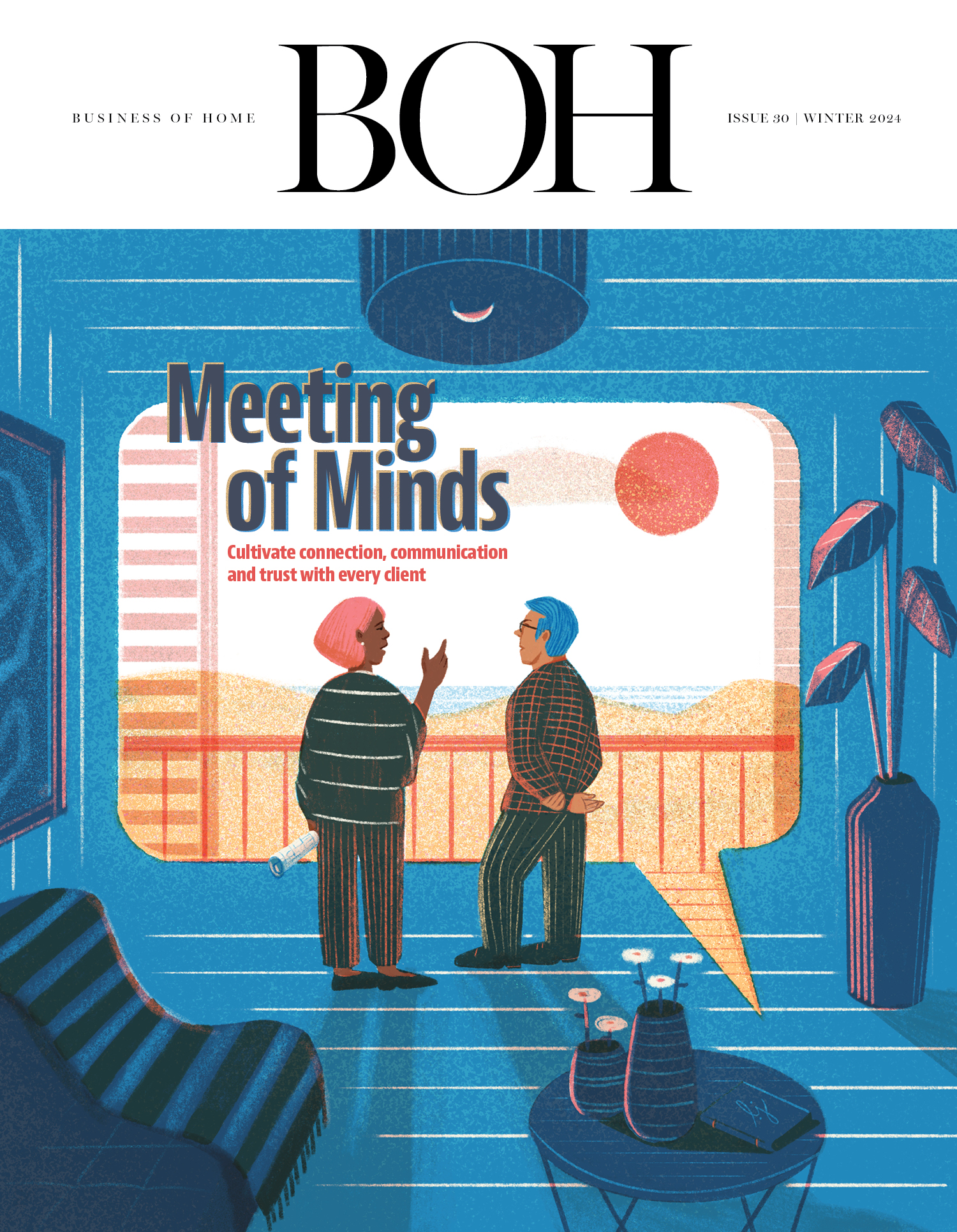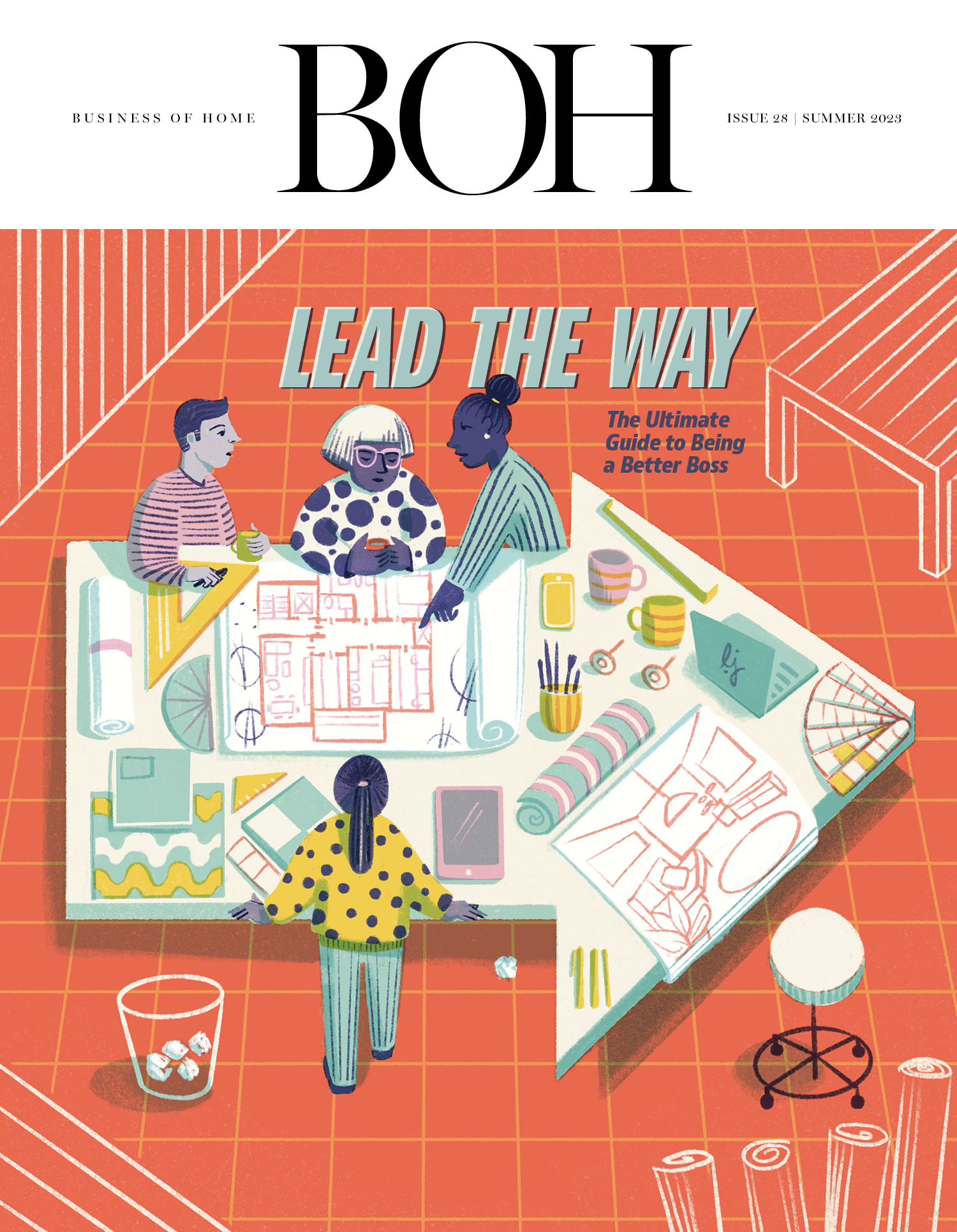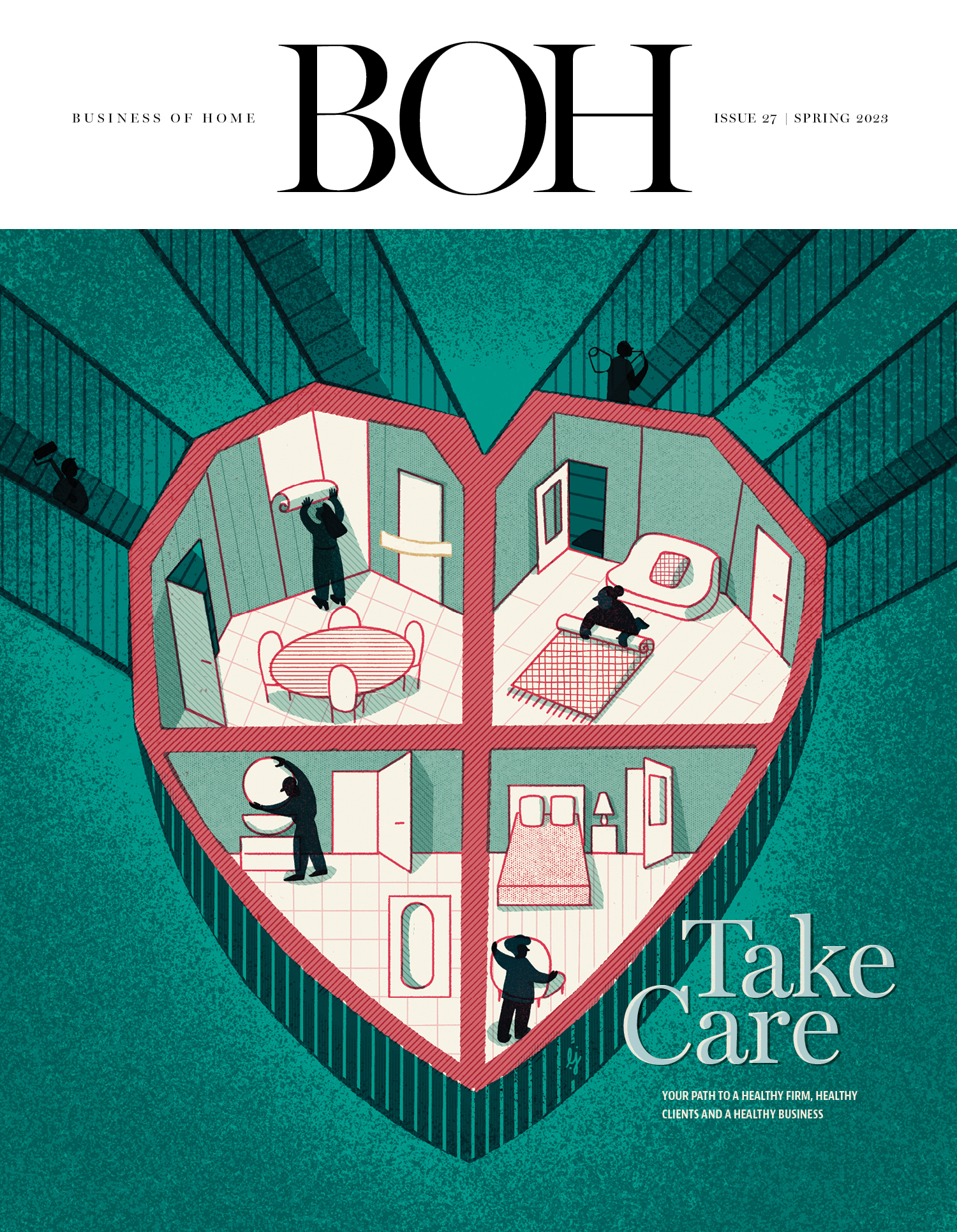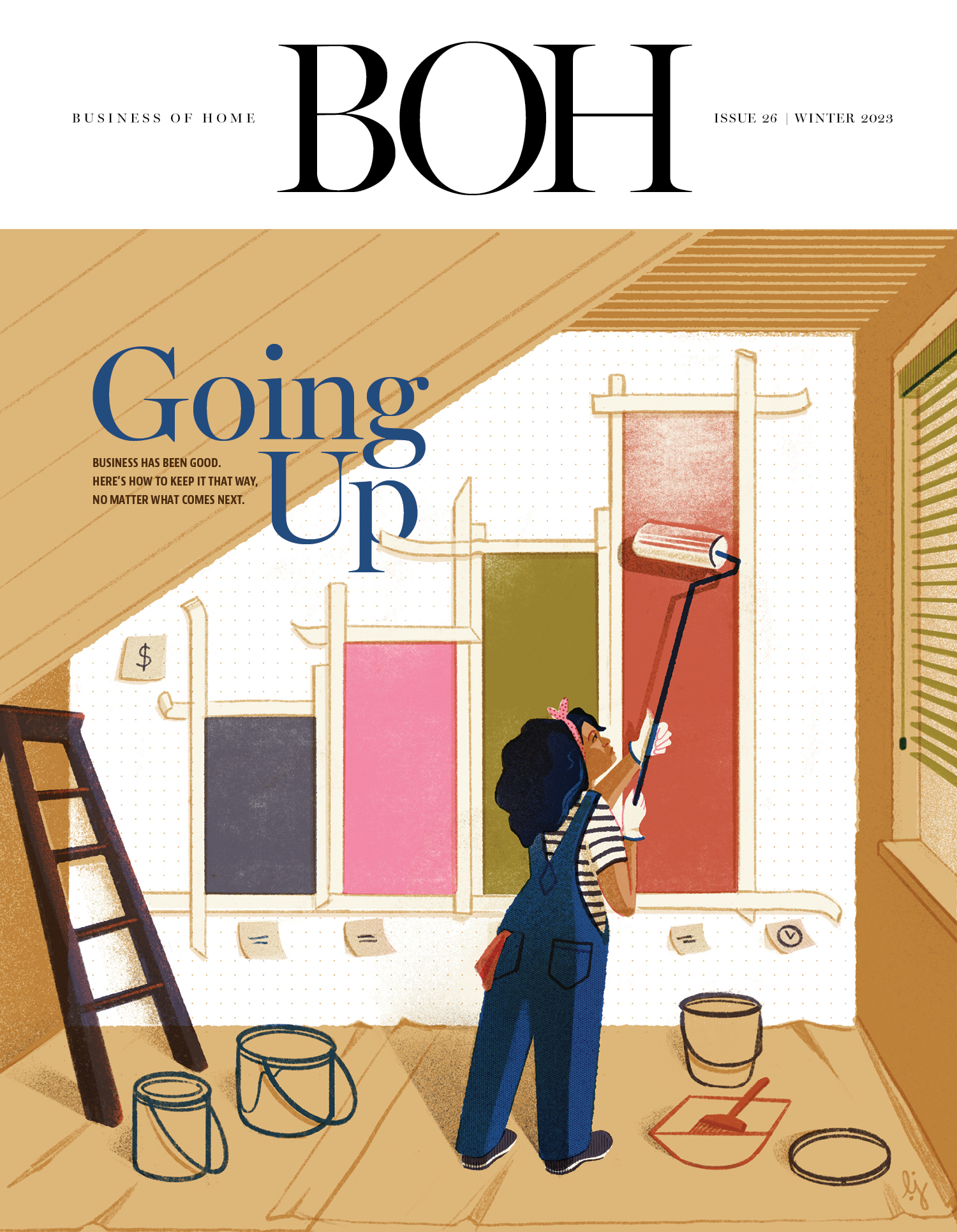In Business of Home’s series Shop Talk, we chat with owners of home furnishings stores across the country to hear about their hard-won lessons and challenges, big and small. This week, we spoke with Kevin Walsh, owner of Little Rock, Arkansas, design firm and showroom Bear Hill Interiors.

Walsh recently returned from a vacation in Italy, which he embarked on after completing three major design projects. Instead of feeling the post-trip Sunday scaries, he was truly excited to get back to business. “The best way to get super energized and pumped up about the showroom is to do a little refresh,” he says, noting that he and his team rearrange art and vignettes roughly four times a year, particularly after sourcing new product at markets. “If it gets the customer excited, it gets the staff excited.” Keeping his team happy is a major focus, he explains ahead, along with surviving tariffs, updating Instagram Stories and trying not to bring merchandise home.
What was your career like before the shop?
My initial career was in banking. I worked at a mortgage credit company, which I did not like. Corporate America was not for me, but it was probably a good thing for me—it helped with a lot of things that I have to deal with daily.
When did you pivot?
I went to beauty school, became a stylist and opened a salon. I did that for 10 years, [during which] I started dabbling in design. Clients would ask me to come help them do stuff at home, and I got into it. I guess I was young and willing to work really hard. I want to say “young and dumb”—or not dumb; just ballsy, I guess.
I decided to bite the bullet and sold my salon. The person who bought it was paying me monthly, so that’s what I lived off of, and then I opened our [current] retail space in 2000. So we do interior design work and have a retail showroom—two businesses.
On July 16, national sales training and business development expert Alison Mullins will help you build confidence and clarity in your sales process. Click here to learn more and remember, workshops are free for BOH Insiders
We want to hear your thoughts! Take BOH’s annual reader survey, an 8-minute questionnaire that helps us get to know you better and will allow us to tailor our storytelling to your business needs.
What’s the aesthetic of the shop?
It’s very similar to my design style: a collected look, with everything that you could possibly need for your home. We have antiques, upholstery, lighting, tabletop, bathroom accessories. It is a pretty vast collection. Everything’s [arranged] in room settings, plus there’s a whole kitchen and bath section.
I love old things mixed in with new things, so I do a lot of vintage shopping—thrifting, antique fairs, estate sales. I’m always looking for unusual collected objects to add to the mix so that our store is a little bit different than everybody else’s. It’s a little harder for people to go and replicate what you’re buying when you’re buying things that are old.
What’s the neighborhood like?
We are in the Riverdale design district, right in the city center. … It’s called Riverdale because the Arkansas River runs through the middle of Little Rock.
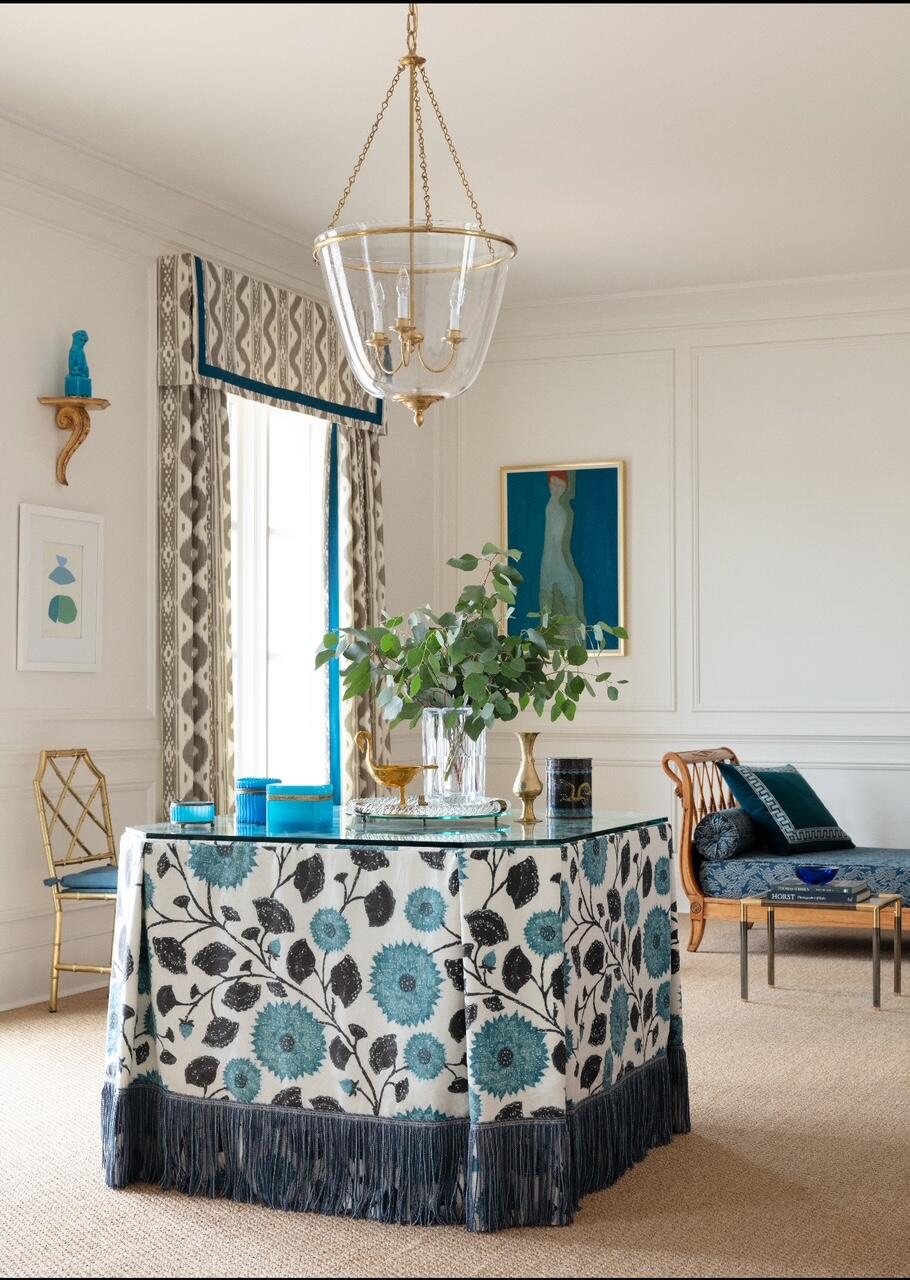
What is your customer base like, and how much is to the trade?
A lot of designers come and pull for projects. I do the same, so it’s a working studio for us. We’re not like a lot of the bigger cities where you can go out and there’s shopping [everywhere], so I try to keep lots of things in store that I would use.
We have a lot of regulars as well. The client base is a very mixed group. We have a lot of young people who shop with us. My design clients shop through me, or sometimes we’ll come into the showroom together and shop. We have gifts and gift wrapping as part of the business. We have a bit of an online presence through Chairish, so people shop through that. We have a pretty big collection on their website. We also have people who come from out of town to shop, like a lady from Dallas who comes often. It’s a destination for them.
What’s the Little Rock design scene like, aesthetically?
My core base is more transitional. They lean a bit more toward color and pattern, and they like a mix [of styles]. But there are still people here who do super traditional things. We have the white-box houses too, but I don’t do that. We love wallpaper, we love textiles, we love curating art collections for people. We try not to replicate anybody’s house—typically, once I use a wallpaper or a paint color or a fabric, we put that in the client’s folder and it’s filed away. We don’t put it back in the bin. Most people want their own house; they don’t want their friends to have their house.
What’s a favorite vendor relationship of yours?
There is a potter that we work with out of Dallas that I love. His name is Paul Schneider. We carry a lot of his pottery in the store, but he also does the most amazing lamps. You get to pick the shape, color, pattern. We also have lots of his bowls, platters, vases. They’re just lovely—interesting shapes, beautiful colors. The glazes are amazing, and he’s so nice to work with.
What is your sourcing process like? Are you going to markets, or using any of the online platforms?
I do a little bit of all of that. Mostly it’s Shoppe Object. I do go to High Point, to the Atlanta gift show, the Dallas market and Round Top. You find different things in different places. I like to mix it up, which keeps it fresh and interesting, and makes it harder for people to source your things. It’s not a huge issue, but I’m not trying to have everything that you can just buy online.
How do you feel about people “shopping” the store?
Here’s the thing: We order the product, inspect the product, pay the shipping on the product, get the product here, and get the product to your house. We take care of all of that. So I’m always like, Hey, if you want to order it yourself and see what happens, go for it. There are lots of layers that people don’t know about. Sometimes you could go and get a better deal, but not always. We also service things after the sale—if somebody has an issue with the leg on their sofa or whatever. You’re not going to get that if you order it yourself. But there are people who do that in the shop, and that’s just part of life.
What’s your favorite category or object in the store right now?
We just got these really amazing hurricanes with wood-and-bone inlay, and they are fabulous. We also just got in this line of trays, trash cans and tissue boxes that are made with marbleized paper. Those things, I mean, they literally flew out the door.
It’s always something small, right?
Yeah, typically. We sell lots and lots of pillows and original artwork. But right now, it’s those trays and trash cans. The price point is just under $100, so they’re easy to sell. It’s not a sofa.
What is your approach to e-commerce?
We only do Chairish. We don’t sell through our website. It’s another whole level to the business, and that becomes another whole set of employees. I’d have to have somebody managing that, and that is the biggest challenge we face right now—just finding people who want to come into a job every day and work.
I have a full-time assistant; a part-time assistant; a full-time design assistant who does drawings and spreadsheets and compiles visual aids for clients. I have a full-time bookkeeper, and then we have somebody who works part-time in the showroom. I would love to have more manpower, but it needs to be the right manpower. I don’t need another designer; I need more people who want to work in retail, and it’s getting harder and harder to find those people.
You’ve been hiring people for a long time. When did you start to notice that change?
It’s generational. I feel like whenever I go into the shops here, it’s always the same group. You don’t notice any new faces at all.
I don’t know if the younger generation’s interested in [traditional] retail anymore [maybe because] everything is e-commerce driven. It’s a brain scratcher for me. Whenever I’m out and about, I’ve always taken business cards with me, and I’ll hand out things to people and say, “Hey, if you know of anybody who’s looking for a job …” We used to do a post on Instagram, like “We’re hiring!” with a description of the job, but I never feel like that brings in the right people, because you’re getting people who have no experience at all, or they want the discount, or they only want to work one day a week. I’ve never had anyone come in [from Instagram] that [made me say], “Oh yeah, that’s our person.” But I have designer friends who do that all the time. It’s different if I’m looking for designers, because the University of Central Arkansas is 30 minutes from here, with a design program, [so there are more people looking for those kinds of entry-level jobs].

What role does social media play in your business?
I've had other people manage it in the past. I manage it now. Instagram Stories are a great vehicle. We post all new merchandise, and we tend to sell things pretty quickly whenever we post. It’s so weird what works now; you used to do an Instagram post and people would see it, but now everybody wants to [consume content even] quicker. They want to zoom through Stories. Instagram is probably our strongest segment. We’re too old to TikTok, so I don’t do any of that.
And you’d have to hire another person.
That’s the thing. And you also have to find people who fit in the mix. We have a really strong team, but one bad person can change the whole dynamic. All of us say we’d rather work harder than have drama in the office.
What are some of your hopes for the future of the business?
I’ll be completely honest—my hope is that with the tariffs, people still shop, and that retail is still going to be a viable thing. I’m not trying to expand the store. It’s a well-oiled machine right now, and I’m going to keep it like it is. We are super busy in the design part of the business, so that’s going well. We are enjoying what we do. That’s the main goal. I want it to be fun every day. I’m not trying to expand into another market. I would do a pop-up possibly, but that would be the extent. A really good friend of mine has two retail locations, one here in Little Rock and one in northwest Arkansas, and she’ll ask: “Have you ever thought of that?” I’m like, no, I’m good.
What’s a great day in the store?
Our days are pretty typical. I get here between 8 and 9 a.m., and then the staff comes in. If I’m in the showroom, I do a quick once-over to make sure everything looks like we’re ready to entertain. I tell people: “Whenever the store’s open, it needs to look like you’re getting ready to have company in your home.” Most people come between 10 a.m. and 3 p.m. You get to visit with someone you haven’t seen in a while, and they’re excited to do something, or they’re working on a project and need to grab some pillows or a candle. You get to have that one-on-one interaction with people. That’s fun for me.



